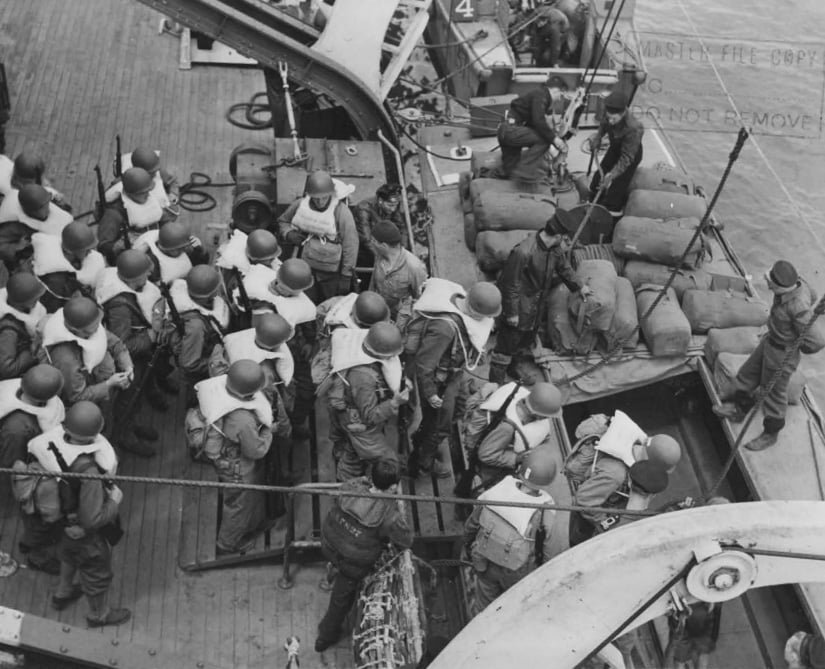The LSI and APA troop transport ships were a significant group of vessels. Strictly they were landing ships rather than landing craft, but contemporary accounts sometimes include them in the total number of landing craft. Known to the British as LSI, there were varied types: LSI(S), LSI(M), LSI(L) and LSI(H) or Landing Ship, Infantry (Small), (Medium), (Large) and (Hand-Hoist). The equivalent US troop transport ships were the APA and XAP: American Auxiliary Personnel, Attack, and Attack Cargo.

Above: Royal Canadian Navy LCAs of 528 Assault Flotilla sortie from their parent ship, the LSI(M) HMCS Prince Henry. (Photo: Directorate of History and Heritage, Canadian Armed Forces)
These were all large ships that could transport both hundreds of troops and many small landing craft a considerable distances overseas, to reach an enemy coast. They played a key role in transporting many of the smaller types of craft used in the Normandy assault.
Over fifty of these ships were involved in the Normandy Landings. They were much more than simple troop transports, which were designed to ferry personnel from one quayside to another. Most were adapted from merchant ships rather than being built specially, so their specifications varied greatly even within each type of landing ship. They ranged from the smaller LSI(H), around 300 feet in length and with a gross tonnage of around 2,500 tons, to the largest LSI(L) at some 500 feet long and 13,000 tons or more.
The most numerous craft they carried were LCAs on British ships and LCVPs on US ships, but they also carried many other types such as LCP(L)s to lead the waves of minor craft, LCMs for their greater capacity of equipment and vehicles, or LCS(S)s and LCS(M)s to accompany the troop-carrying boats and provide fire support.

Above: US troops board LCAs of 528 Assault Flotilla RCN, on the derricks of the LSI(M) HMCS Prince Henry. Loading this way was much easier than having to climb down rope netting on the ship’s side. Parts of the arms of several derricks can just be seen at the top and bottom of the photo. This took place after the assault, which is why the troops’ flotation devices are not of the assault-type, and they have kit bags with them (piled on the LCA’s stern). (Photo: Directorate of History and Heritage, Canadian Armed Forces)
The largest British ships of this type were the LSI(L), such as HMS Glenearn and HMS Glenroy. For D-Day each carried over 1,000 troops and twenty-four minor craft, as well the crew for the ship and the landing craft on board. The US equivalent was the US Auxiliary Personnel, Attack (APA) or Attack Transport, which typically carried 1,200 to 1,400 troops.
Ferries were another type of ship converted by the British into LSIs. Reflecting their size, they carried fewer landing craft on their davits and had many fewer troops on board. The LSI(H) type had hand-hoisted davits, hence the ‘H’ in the designation.
Landing ship designations for LSI and APA troop transport ships:
APA: Auxiliary Personnel, Attack, a US Navy troop transport ship.
LSI(H): Landing Ship, Infantry (Hand-Hoist).
LSI(L): Landing Ship, Infantry (Large).
LSI(M): Landing Ship, Infantry (Medium).
LSI(S): Landing Ship, Infantry (Small).
XAP: Auxiliary Transport, a US Navy troop transport ship. In contrast to APAs, these ships had to lower their small landing craft unloaded from the ship’s deck using derricks, rather than being able to despatch them from davits on the ship’s sides.